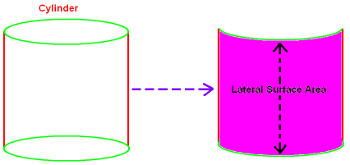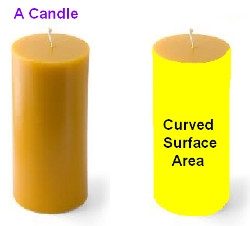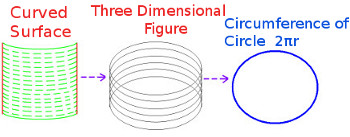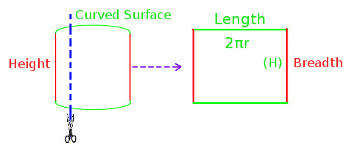| Arithmetic Additive Identity
Arithmetic Progression
Associative Property
Averages
Brackets
Closure Property
Commutative Property
Conversion of Measurement Units
Cube Root
Decimal
Distributivity of Multiplication over Addition
Divisibility Principles
Equality
Exponents
Factors
Fractions
Fundamental Operations
H.C.F / G.C.D
Integers
L.C.M
Multiples
Multiplicative Identity
Multiplicative Inverse
Numbers
Percentages
Profit and Loss
Ratio and Proportion
Simple Interest
Square Root
Unitary Method
Algebra Cartesian System
Order Relation
Polynomials
Probability
Standard Identities & their applications
Transpose
Geometry Basic Geometrical Terms
Circle
Curves
Angles
Define Line, Line Segment and Rays
Non-Collinear Points
Parallelogram
Rectangle
Rhombus
Square
Three dimensional object
Trapezium
Triangle
Quadrilateral
Trigonometry Trigonometry Ratios
Data-Handling Arithmetic Mean
Frequency Distribution Table
Graphs
Median
Mode
Range
Videos
Solved Problems
|
Home >> Three dimensional object >> Right Circular Cylinder >> Lateral Surface Area of Cylinder >> Lateral Surface Area of Right Circular Cylinder
Definition: The curved surface joining the two bases of right circular cylinder is called its Lateral Surface Area.
It's important to note:
Lateral Surface Area = Curved Surface Area = Surface Area
With the help of following diagrams it's further clarified:
Diagram 1
In the below diagram you can see that LHS diagrams depicts A Right Circular Cylinder and RHS diagram demonstrating Lateral Surface Area.

Diagram 2
In the below diagram you, on the LHS there is a candle in the shape of Right Circular Cylinder and on RHS there is same candle whose Lateral Surface Area is highlighted with yellow color.

Formula of Curved Surface Area of Right Circular Cylinder:
Curved Surface Area of Right Circular Cylinder = 2Πrh
Now Let's understand that how we get this formula:
As explained above - "The curved surface joining the two bases of right circular cylinder is called its Lateral Surface Area."
So Lateral Surface area has two main components curved surface and height, as demonstrated in below diagram 3.
Diagram 3

For more clarification check the Diagram 4 which is showing the curved surface in three dimensional figure.
Diagram 4 :

From Diagram 4, you can see that curved surface is in the form of a circle.
And Circumference of Circle = 2Πr
Now if we cut right circular cylinder from one base to another, we will get a rectangle, as in Diagram 5:
Diagram 5 :

From the above diagram,
curved surface of right circular cylinder will be length of rectangle, which is equal to circumference of circle (2 Π r) (refer to diagram 4).
Height of right circular cylinder will be breadth of rectangle.
Area of rectangle is equal Lateral Surface area of Right Circular Cylinder.
So we get;
Length of Rectangle = Circumference of circle = 2Πr ------------- (1)
Breadth of rectangle = height of Right Circular Cylinder = h --------(2)
Area of Rectangle = Lateral Surface area of Right Circular Cylinder. --- (3)
Now, we know
area of Rectangle = Length X Breadth
From above statement (1), (2) & (3), we get
Lateral Surface area of Right Circular Cylinder = 2Πr X h
Study More Solved Questions / Examples
Find the lateral surface area of cylinder shaped bin which has the following radius
A) Radius of 16 cm and height of 10 cm ?
B) Radius of 9 cm and height of 20 cm ?
C) Radius of 19 cm and height of 23 cm ?
D) Radius of 8 cm and height of 9 cm ?
E) Radius of 15 cm and height of 11 cm ? |
Find the lateral surface area of cylinder shaped jar which has the following radius
E) Radius of 19 cm and height of 22 cm ?
F) Radius of 16 cm and height of 5 cm ?
G) Radius of 24 cm and height of 21 cm ?
H) Radius of 18 cm and height of 28 cm ?
I) Radius of 10 cm and height of 22 cm ? |
| | |
|






